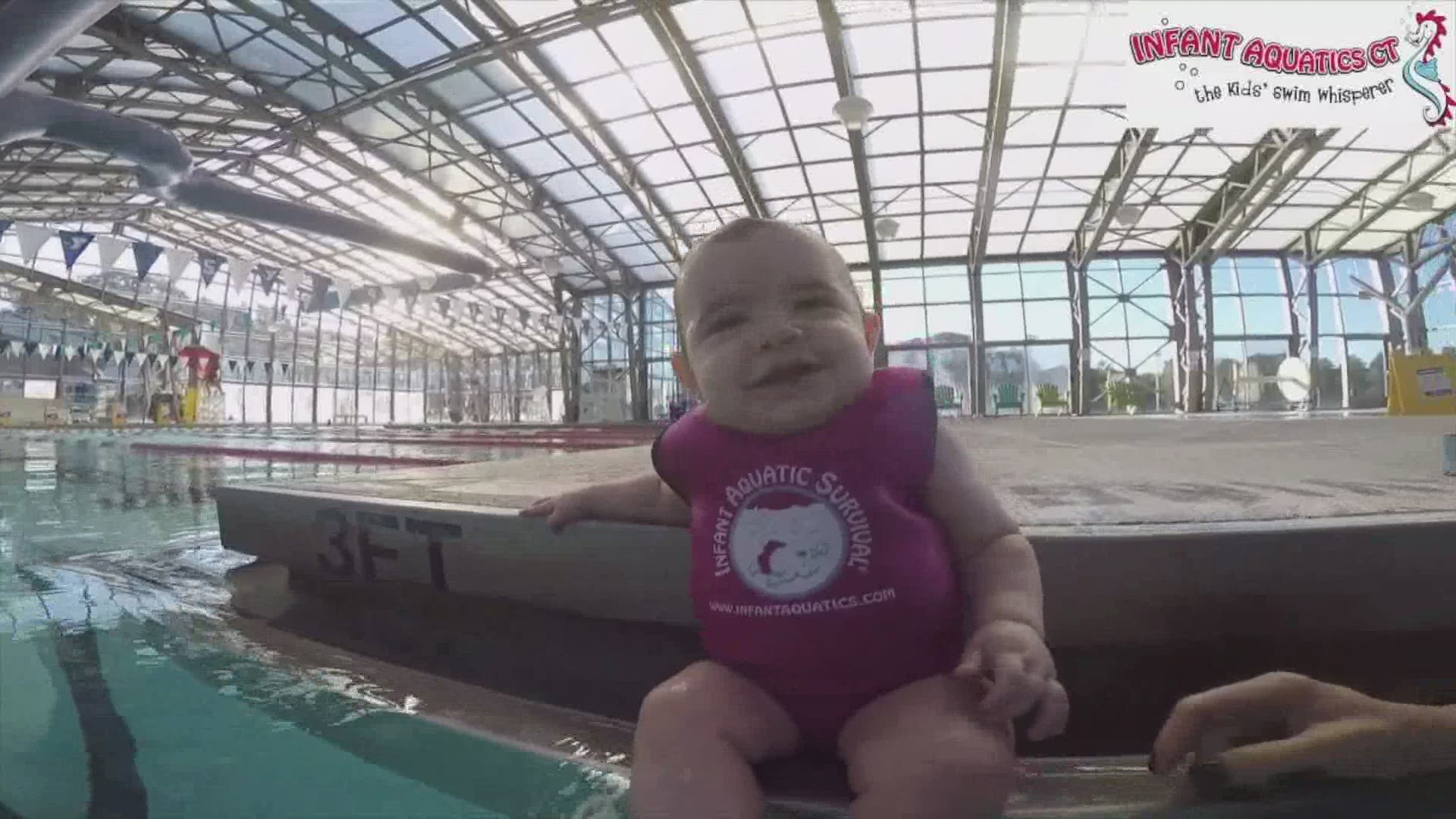HARTFORD, Conn. — Summer means fun in the sun... and the water! In this week’s Family First we’re discussing water safety during the pandemic.
According to the CDC, drowning is the leading cause of unintentional death for children ages one to four.
Early swimming lessons can help protect children, but with everything that’s going on, you may have put those on hold. Or perhaps you’re wondering if they’re currently available and in a safe manner.
Dena Blum Rothman from Infant Aquatics CT has taught children and babies this important life skill for the past thirteen years. She says when it comes to learning how to swim: don’t delay. The sooner the safer, especially these days!
Dena’s program starts for babies as young as 4- 6 months, or as soon as baby can roll over on their own. She says an infant typically completes her program in 4 weeks. By this time they can float on their own in the water.
Like many organizations and businesses, the pandemic forced Dena to shut down for two months back in March. She eventually received permission from the COVID-19 response team for the State of Connecticut to teach out of her home. Equipped with underwater N95 masks, Dena was grateful to get her students back in the pool. She says with so many parents staying home these days, there’s been an influx of pools and kiddie pools in backyards and that she’s frightened just thinking about the threat that poses for children.
Dena has some tips for parents and caregivers to consider this summer to keep their kids safe in the water.
- If you have a kiddie pool, dump the water out as soon as you’re done using it and flip it over on its side. Don’t let rain water accumulate.
- If you have a pool and your child goes missing, perhaps playing a game of hide and go seek, check the pool FIRST.
- Don’t teach your kids to blow bubbles for fun. They don’t know the difference between a sippy cup, and bathtub or a pool. Instead, you want to teach them to be able to hold their breath.
- Don’t catch your child when they jump into a pool. This act teaches them that someone will be there to catch them whenever they want to jump in. Let them jump and go underwater and grab your hand to come up instead.
- Be aware of swimming programs that use flotation devices that keep you in a vertical position, which is the drowning position.
For more information on Dena’s Infant Aquatics program, please check out: http://www.infantaquaticsct.com/

